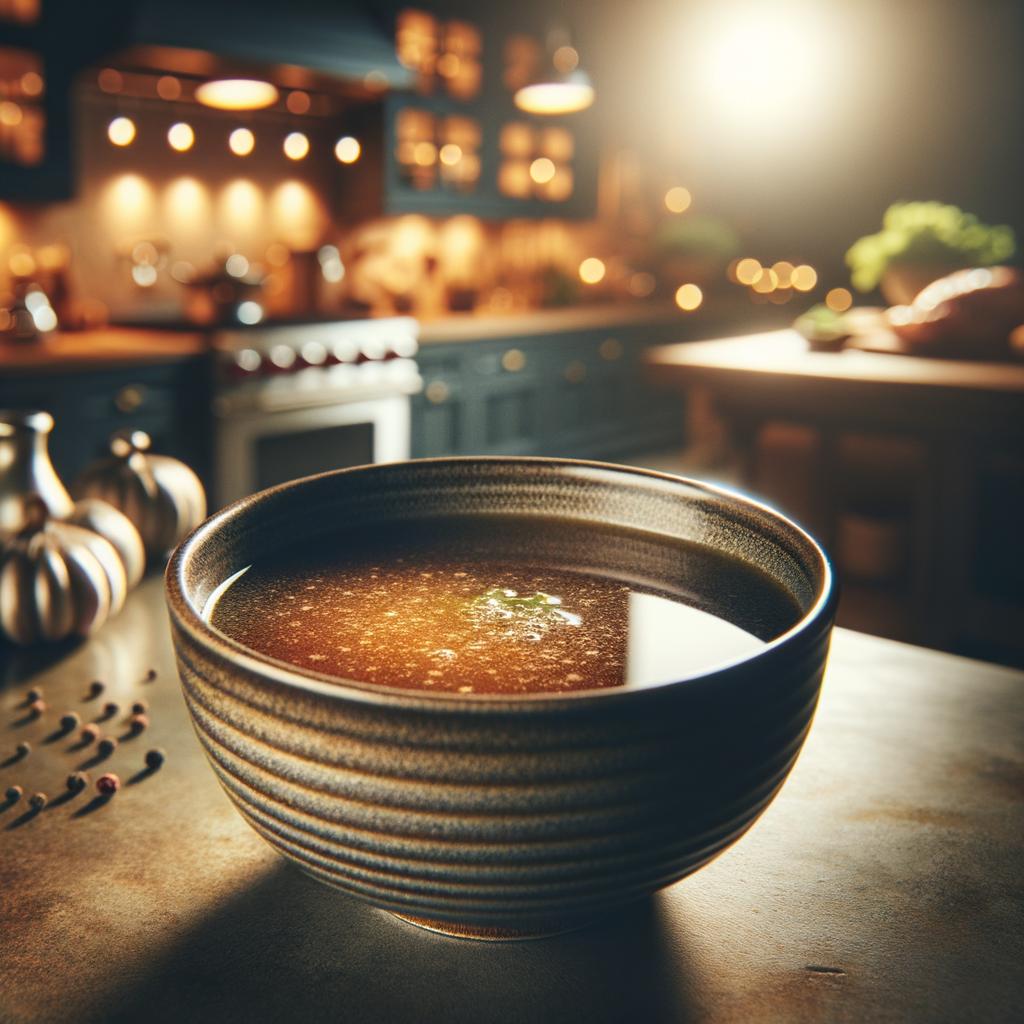for the Broth:

Description The humble broth, a clear, flavorful liquid made by simmering meat, poultry, fish, or vegetables in water with an assortment of aromatic ingredients, is a cornerstone in the culinary world. Its appearance can range from a translucent golden hue to a rich, deep brown, depending on the ingredients used. The texture is liquid and can be thin or slightly viscous, with a flavor profile that is a symphony of savory, umami, and subtly sweet notes. What sets broth apart from its culinary cousins, like stock, is its standalone ability to be consumed as is. It's not just a foundation for other dishes, but a star in its own right.
Primary Uses Broth serves as the heart of countless dishes across diverse cuisines. It's the soul-warming base of soups like the classic chicken noodle, the French onion, or the Vietnamese Pho. It's used to cook grains for a flavor-packed risotto or pilaf. In Japanese cuisine, it's the base for the popular 'Ramen'. Beyond the culinary world, broth has a reputation as a restorative elixir, often used as a home remedy for colds and flu. It also plays a significant role in the bone broth health trend, revered for its purported healing properties.
History The history of broth is as old as the history of cooking itself. It's believed that our Stone Age ancestors may have made the first broths, boiling bones in turtle shells over fire. In the Middle Ages, 'brothels' were not places of ill-repute, but rather establishments serving broths and stews to weary travelers. Over time, broths have transitioned from a necessity for survival to a culinary staple, inspiring countless variations and adaptations. An intriguing myth from the Chinese culture is that of 'bone soup', a broth so rich and flavorful that it could bring a dead man back to life!
Nutritional Information Broth is not just a flavor enhancer, but a nutritional powerhouse. It's rich in minerals like calcium, magnesium, and phosphorus, drawn out from the simmered bones. It also contains collagen, which turns into gelatin and provides a protein boost. The vegetables used add a plethora of vitamins, making it a well-rounded source of nutrition. Compared to cream-based soups or gravies, broth is lower in calories and fat, making it a healthier choice. Its high fluid and electrolyte content also makes it an excellent hydrating agent. However, commercially prepared broths can be high in sodium, so homemade versions or low-sodium options are recommended for those monitoring their salt intake.

